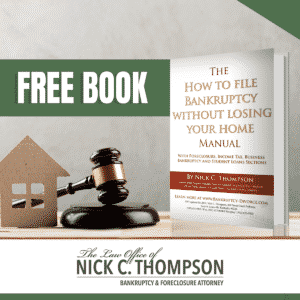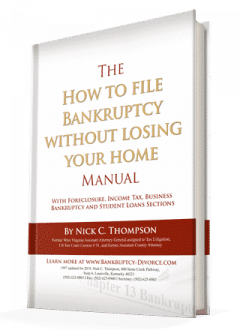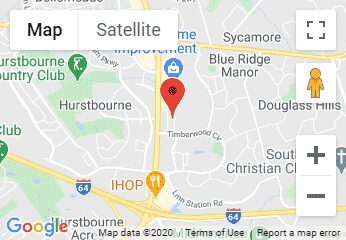You are in the right place if you’re searching for information regarding student loans and how to prove undue hardship discharges. What is an undue hardship for student loans? First, to obtain the undue hardship discharge for student loans, a debtor has to prove repayment would be an “undue hardship” for him or his dependents. Of course, establishing what a judge thinks is an “undue hardship” is complicated, and not all judges agree on what student loan undue hardship is. Over 500 people contact bankruptcy court for proving undue hardship discharge for student loans every year.
Student Loans and Undue Hardship Discharges
Morgan King and Josh Cohen are two of the best student loan debt lawyers. Both lawyers have written books and produced seminars on discharging student loans in bankruptcy and managing student loans. I co-authored the Morgan King book and seminar.
Even New York no longer uses the Brunner test, which is where the test came from. Kentucky and most states have the Bruner test for hardship for student loans, but it is challenging to get hardship discharge student loans even under the most liberal test called the Andersen test. In re Andresen, 232 B.R. 127 (B.A.P. 8th Cir. 1999), the harsh Brunner test (started in New York) is the three-part standard test. This test covers three elements which can be summed up as follows:
-
The debtor has made good faith payment attempts.
-
He cannot currently pay and maintain a minimum standard of living for himself and his dependants.
-
He will probably never be able to repay without proving undue hardship.
How to Prove Undue Hardship for Student Loan?
For you to establish a student loan debt is an undue hardship, the debtor must show that the debtor or his dependents would suffer undue hardship if the debtor had to repay and continue owing the student loan debt. Student loan undue hardship is not just a hard time. Undue hardship is when the debtor or his dependents cannot even afford the essentials of life such as a home, food, medical care, clothing, education for the children, or transportation.
If you ask the servicers for the student loans, if an undue hardship is possible, they will respond that it is impossible and undue hardship never happens. However, every year over 500 cases obtain an undue hardship discharge. I am not looking at the data for 2000 through 2022, when federal student loan debt collections were suspended. But before the pandemic, the average was that Americans prove undue hardship between 500 and 1000 times per year.
This low number is often because most attorneys assume they can’t win, and the cost for a low-income debtor is attorney fees. Always remember about 40% of the people who ask for the hardship discharge get it. About 15% will get a partial discharge, but another 25% will get total student loan debt discharged. The four different studies all agree closely with the estimates. Both clients and attorneys assume you can’t do it.
The Brunner vs. Andresen Bankruptcy Test
The Andresen test applies a test similar to Brunner and looks at the “totality of the circumstances.” Brunner considers the debtor’s past, present, and future ability to pay. Brunner also looks at the debtor’s family’s expenses to maintain a minimal standard of living along with any other relevant facts or circumstances surrounding their situation.
However, Anderson does not require the debtor to prove they made an effort to repay in the past and focuses on the future ability to repay. In theory, it seems more generous to discharge a student loan debt, but the reality is that still very few people qualify. One new proposed test is that the definition of undue hardship for reaffirmation agreements should apply, and if the student loan debts cannot be repaid, it should be an undue hardship.
Here’s an example of Anderson. A 39-year-old woman with a 10-year-old child earned $14,000 in Minnesota with $61,000 in student loan debt. She lives with her parents and suffers from medical problems. She works only 9-months out of the year and is pursuing an additional degree. Unfortunately, the judge declined a hardship discharge due to her income level and the fact she has higher earning potential after completing the additional degree.
However, she can pay $54 per month under the Income Contingent Repayment Program (ICRP). Since the ICRP results in forgiveness of the debt after 25 years (and before retirement), she does not have an undue hardship.
If your “hypothetical budget” can afford the ICRP payment, that is often the decisive factor. As another example, a Missouri bankruptcy court stated, “the debtor’s ability to afford payments under the ICRP is determinative.”
Criticism of the ICRP
The criticism of this ICRP focus is that it does not consider the taxes that result from the “forgiveness” of tens of thousands of dollars of debt in one year.
How reasonable is it for someone earning only $20,000 per year, with dependents, and over $60,000 of debt on their credit report to finance a car or a home? It virtually ensures the failure of any “fresh start,” which is the essential goal of bankruptcy.
The debtor is almost always stuck in a catch-22 situation with ICRP if they try to prove undue hardship. On the one hand, they must hire expert witnesses and attorneys to prove undue hardship. But on the other hand, if they can afford the attorneys, it also proves that they can afford the repayment of the student loan debt.
What Qualifies as an Undue Hardship for Student Loans?
The first appellate court decision which attempted to establish what an undue hardship is was Brunner. The New York Circuit division no longer uses this test. The totality of the circumstances is now used where all the factors affecting a debtor are considered. Although our district still uses the Brunner test, more districts have been using the totality test. The Brunner test is more difficult to pass than the totality of the circumstances.
There are chapters and books on what it takes to pass the Brunner test. The three elements of the test are:
1. Have you made a good-faith effort to repay?
2. Are you unable to maintain a minimal standard of living while making the payments?
3. Is your financial situation likely to persist?
These conditions often exist for any debtor, but the judges and servicers put up a strong defense in these cases.
Steps in Filing Bankruptcy and How to Prove Undue Hardship for Student Loans
The student loan discharge attorney often has $10,000 in work for just filing the adversary complaint, discovery, and trial. Few law offices will start an adversary without a retainer fee being paid upfront and won’t guarantee the results. There are administrative discharges for people who can qualify for other reasons. For instance, most federal student loans allow a disability student loan discharge. Most of these administrative discharges only require filling out an application.
The undue hardship student loan discharge requires that you must file an adversary proceeding. This adversary proceeding is a separate trial that is conducted in bankruptcy court. Your Chapter 7 or Chapter 13 will be closely audited in efforts by the servicer to prove that you have not declared all your income and assets or that you are not using your best efforts to repay.
After the adversary petition is filed, you will have to answer discovery questions about your finances.
The discovery will often have three parts.
About 25 Questions or interrogatories on separate issues will typically be asked. If you have more than one question about a topic, it will probably be broken into subparts.
Requests for documents allow you to see the accounting the lender is claiming or other documents you may need to prove your case.
Requests for admissions ask for admission from the lender. You may need them to admit that the school was not qualified as defined by the statute. Student loan through qualified schools is protected from discharge.
A summary judgment application often follows discovery. Summary judgments are approved when there are no issues of fact the judge needs to decide. If no one is disputing any facts and the judge has all of the evidence before him, there is very little or no reason for a trial. A trial only answers questions of fact and then applies the law. Summary judgment lets you jump directly into a judgment, finding facts and order.
Potential Outcomes for Undue Hardship Cases
Filing an adversary proceeding will give you one of the multiple outcomes. About half the time, you will get a discharge of your student loans. The discharge may be a partial or complete discharge of your student loan debt. It is far easier to discharge private student loans because private student loans typically have higher interest rates and do not have an income-based payment.
Suppose the federal student loan debt offers you a $1 a-month payment that does not even repay the interest. It may be hard to prove that a dollar a month payment is an undue hardship and commands a discharge. However, a private student loan debt with a $750 per month payment may be more than your rent and can make a poor person homeless. Private loans have no income-based repayment and present a more significant danger to student loan borrowers.
If you are not given an undue hardship student loan discharge, you may have to live with your loans. However, the Department of Education will often ensure that your future payments are affordable. If conditions worsen, you can usually return to the adversary proceeding and reopen the case later.
Is Bankruptcy Essential to get Student Loans Discharged?
The undue hardship discharge of your student loans is only an option in bankruptcy court through filing an adversary proceeding. The problem is that the option is primarily only available to the very poor, who would suffer undue hardship if they were forced to repay student loan debt.
Most federal student loans can be made affordable and gotten out of default by consolidation or rehabilitation. But there are no such programs for a private student loan, and you should not confuse your defenses for government loans with entirely different solutions for private student loans. People who file for undue hardships cannot pay for a lawyer to do it; in most cases where it is granted, debtors have represented themselves. So, it isn’t impossible. It is done daily by laypeople who do not have the skills of a lawyer.
Lay persons fight against lawyers hired because of their abilities in fighting these cases against student loans. And both sides lose about 40-50% of the time. Four different academic studies like this one prove this. More undue hardship discharges would be granted if consumer attorneys could or would accept these cases. But they can’t work for free. It can take weeks of their time to process one of these cases. Typically, the servicer will hire one attorney to specialize in fighting these cases.
Do you Think You Can Prove a Student Loan Undue Hardship or Need Alternatives?
Most lawyers assume they can’t win a student loan undue hardship case. That lack of belief in themselves is due to the myth that they can’t do it. It is like the elephant chained as an infant to a stake. As a young elephant, he cannot break the chain, and for the rest of his life, he tugs at a small rope that can’t stop him as a larger animal. He slightly tugs at it for life, assuming it is restraining him when only his mind keeps him captive.
I won’t say every debtor can qualify, but if you meet the standards of undue hardship, you can file for it, and you have about a 50-50 chance even without an attorney.
One of the alternatives I need to outline is that private student loans are no better than a credit card. All of the defenses you can apply to a typical debt apply to private student loan payments, including the statute of limitations. Often these loans are sold and resold, and they have abysmal records of any repayment. If you file a Chapter 13, the years you spend in Chapter 13 do not apply towards the statute of limitations.
However, it does discourage the debt holder so much that he will not pursue collection after Chapter 13 is discharged.
Finding a Qualified Student Loan Attorney!
It would be hard to find a qualified student loan attorney who feels comfortable attempting to discharge a student loan. It requires a lawyer who wants to study the subject, which may provide a small income but which will not provide a lucrative income. Working for creditors and the bank pays more. The average consumer attorney in 2022 makes about 250 per hour. In Indianapolis, one survey showed that banks were paying about 450 to 500 per hour in 2020.
Most of the better lawyers have been trained by Joshua Cohen or Morgan King. I did a seminar with Morgan King about 2017 on how to discharge student loan payments. There is a book he published with five other lawyers who did the workshop. I would never suggest that you do this on your own. I practice in the Western District of Kentucky. Over the years, I have filed some undue hardship discharges, and I believe I have won more than half of them. They are not easy, but they are not impossible.
If you cannot repay your student loans and are being sued, have your wages or bank funds garnished; give us a call. Often going to a Bankruptcy court can be a method to get your loans out of default.
 Resources for Bankruptcy
Resources for Bankruptcy
Student Loan Collection Defense Lawyer • Video
Hardship Discharge Student Loans
Student Loan Statute of Limitations
Student Loan Bankruptcy Qualifications
What is the Student Loan Brunner Test?
Bankrupt or Discharge Student Loans
If you are considering bankruptcy, don’t delay because timing is crucial. I am here to help you. So, contact my office immediately to start the conversation—Nick C. Thompson, Bankruptcy Lawyer: 502-625-0905.






